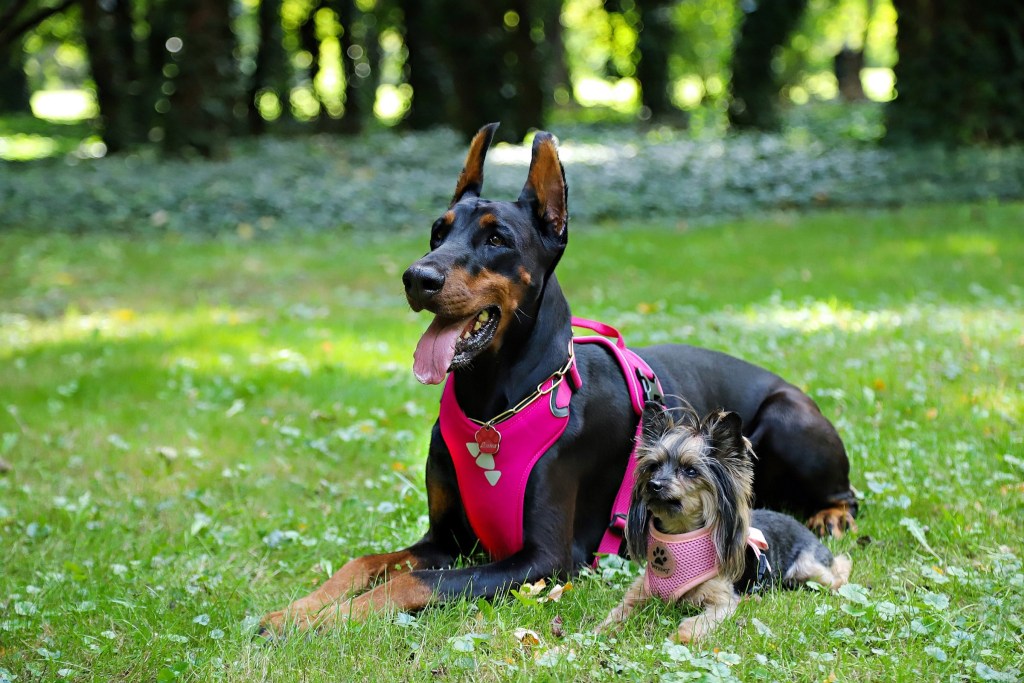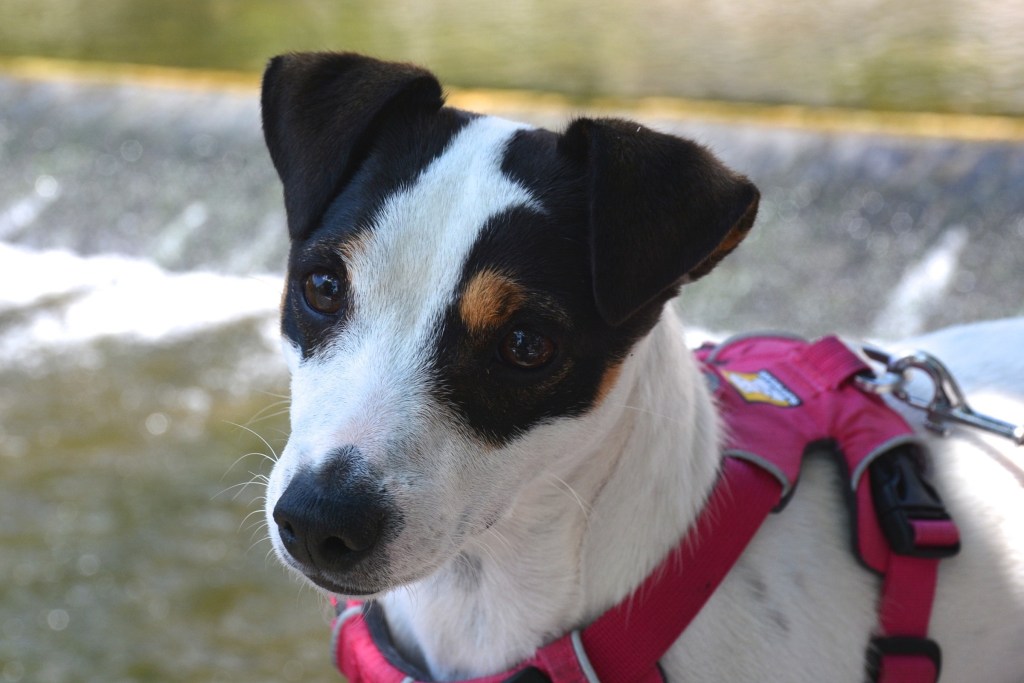It may look simple from afar, but securing your dog’s harness actually is more complex than it seems. Dog harnesses often come with many snaps and buckles, and it can be nearly impossible to tell where each paw goes, let alone how to put it on your dog. Because of their complexities, many pet parents don’t do enough research when purchasing a harness (which isn’t necessarily their fault; pet products don’t often include detailed instructions and safety information).
The first step to mastering the art of securing dog harnesses is knowing what makes a harness “good.”
Dog harness vs. collar
When deciding between dog harnesses vs. dog collars, the former option is the way to go if you want to keep your pooch at ease during those daily strolls. If you notice that most dogs around your neighborhood wear a harness, it’s because they’re convenient and comfortable for pups of all sizes. While collars keep your dog safe in case they get lost, using them to hook onto the leash is a choking hazard for dogs who like to pull or escape.
When your dog pulls, the collar creates pressure on the trachea and causes breathing problems for your pooch. If you’ve heard your dog coughing during walks, it’s time to make the switch to a harness. They’re the safe alternative to distribute pressure across the chest and prevent choking next time your dog pulls.
For owners who enjoy running with their pup, harnesses help avoid tangled leashes around your dog’s legs. They also offer more places to grab from or lift larger or senior dogs.
Other advantages of using a dog harness include:
- Less strain to your arms and back when walking a large dog.
- Easier to train puppies how to walk on a leash.
- Greater control with less pressure.
- Finding the proper size
How to secure dog harnesses
You’ve got several types of harnesses to choose from, but the standard harness will encircle your dog’s ribs and lower neck, with openings for her legs to go through. Some standard harnesses are made of nylon straps secured by buckles and rings, while others are more like mesh vests that you fasten around your dog.
To put on a standard harness, have your dog sit calmly. The American Kennel Club recommends slipping the harness on over their head, with the back loop — the widest one that goes over the ribs — first. The metal D ring that clips to your dog’s leash should be sitting on her back. Usually, the buckle to secure the harness will be around one of the leg holes, so take it one paw at a time. Your dog may need a hand lifting her paws and putting them in the right spot; be patient with her as she figures it out. Odds are, you’ll still be figuring it out, too!
You may also run into a front-clip harness, which discourages your dog from pulling while on walks. A lot of these harnesses, thankfully, work the same way as standard harnesses.

How tight should a dog’s harness be?
Once the harness is secured, you should be able to slip two fingers under any strap at any time. If the harness is too loose, you risk your dog slipping out; too tight, and your dog could hurt herself by pulling too hard.
Luckily, most harnesses are adjustable. You can also help keep your dog safe by purchasing the correct-size harness for her. Many come with a sizing guide, but you’ll need to know your pup’s measurements to use them as accurately as possible.
How to measure your dog for a harness
Sizing charts for most harnesses use three main measurements: chest girth, neck girth, and back. To get these numbers, use a tape measure (and some treats!) for the most accurate measurements.
- The chest girth measures the largest part of your dog’s ribcage, which will be behind her front legs. Taking this measurement is easiest while your dog is standing on all fours like she will be on walks.
- To measure the neck girth, look for the spot on your dog’s back where her shoulder blades meet, as well as the very top of her chest — about the level where her collar will sit. You’ll want to measure around her neck using these points for the most exact recording.
- For her back, measure from the point where your pet’s head and neck meet to the base of the tail. Even though harnesses don’t go from nose to tail, they do need to fit over a good portion of the dog’s back, so this number is still important.
If you’re not sure you’ve measured right, check out the sizing chart of a harness you’re considering: Most include a visual example of the measurements needed to find the right size.

Signs your dog’s harness does not fit correctly
Of course, your dog’s harness doesn’t fit correctly if she can get out of it. It’s also a problem if two fingers can’t fit comfortably underneath — the harness is too tight! Naturally, an ill-fitting harness isn’t always this obvious, but you can still look for these signs of an incorrect fit:
- Chafing, rashes, or loss of fur around the harness area.
- The harness slides or falls to the side — the leash should clip on the top of the back or on the front of the chest, depending on its style.
- If your dog reacts negatively toward the harness or putting it on.
- Any one or more of the straps loosen.
- They can easily wiggle out.
- It seems to restrict your dog’s movements.
- The back ring where the leash clips rotates to the side.
A comfy and correctly fitting harness can be the difference between a safe, fun walk and an extremely difficult one. It may take a second to find the right harness for your dog, and maybe another few seconds to figure out how to put it on, but it’ll be oh-so-worth-it when you do. Investing in a harness now will ensure your dog’s comfort and safety for years to come.
Editors' Recommendations
- Can dogs eat oranges? Read this before feeding your pet
- Can dogs eat pineapple? What you need to know
- Can dogs eat shrimp? The answer may surprise you
- Does your dog drink a lot of water? Here’s when you should be concerned
- Are Himalayan dog chews safe for your pet? Know this before you buy




